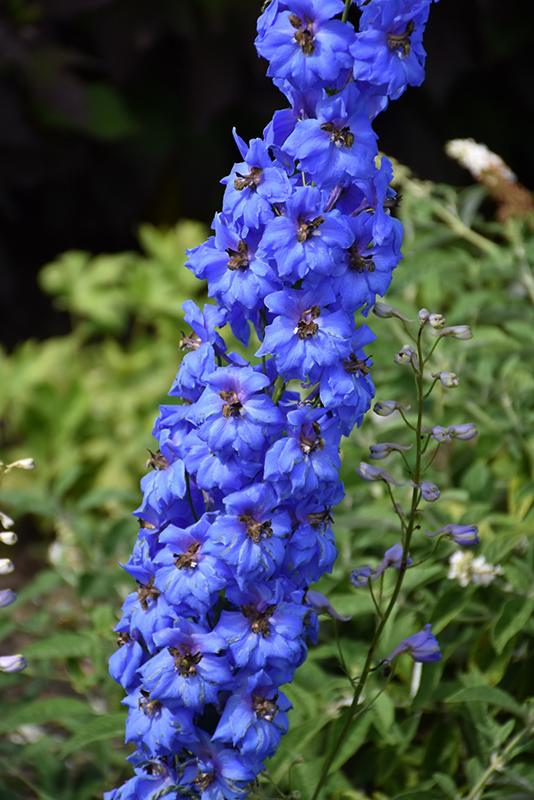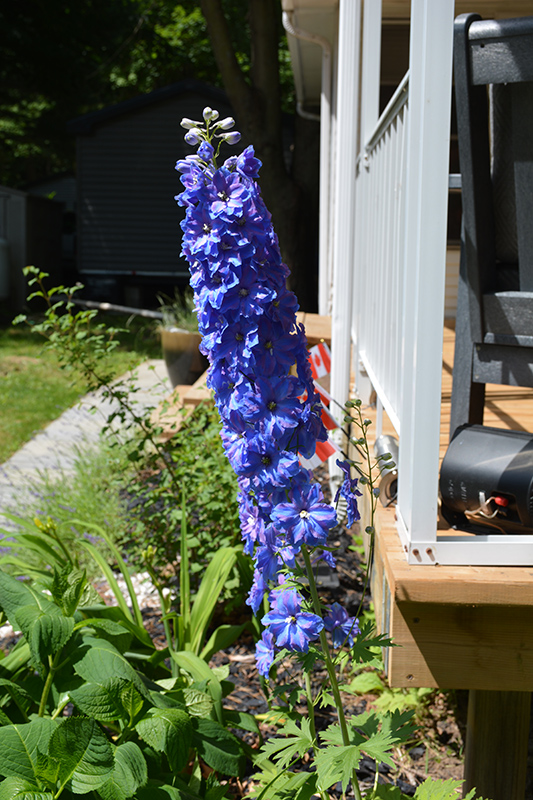Million Dollar Blue Larkspur
Delphinium 'Million Dollar Blue'
Height: 3 feet
Spacing: 16 inches
Sunlight:
![]()
![]()
Hardiness Zone: 3a
Group/Class: Million Dollar Series
Brand: Walters Gardens
Description:
An impressive display of luxurious true-blue flowers on towering spikes with a black bee; good vertical form, dense flower spikes and strong stems; excellent uniformity
Ornamental Features
Million Dollar Blue Larkspur features bold spikes of blue flowers with violet overtones and black centers rising above the foliage from early summer to early fall. The flowers are excellent for cutting. Its deeply cut lobed leaves remain green in colour throughout the season.
Landscape Attributes
Million Dollar Blue Larkspur is an herbaceous perennial with a rigidly upright and towering form. Its relatively fine texture sets it apart from other garden plants with less refined foliage.
This plant will require occasional maintenance and upkeep, and should be cut back in late fall in preparation for winter. It is a good choice for attracting bees, butterflies and hummingbirds to your yard. Gardeners should be aware of the following characteristic(s) that may warrant special consideration;
- Insects
- Disease
Million Dollar Blue Larkspur is recommended for the following landscape applications;
- Vertical Accent
- Mass Planting
- General Garden Use
- Container Planting
Planting & Growing
Million Dollar Blue Larkspur will grow to be about 28 inches tall at maturity, with a spread of 20 inches. When grown in masses or used as a bedding plant, individual plants should be spaced approximately 16 inches apart. It tends to be leggy, with a typical clearance of 1 foot from the ground, and should be underplanted with lower-growing perennials. The flower stalks can be weak and so it may require staking in exposed sites or excessively rich soils. It grows at a medium rate, and under ideal conditions can be expected to live for approximately 10 years. As an herbaceous perennial, this plant will usually die back to the crown each winter, and will regrow from the base each spring. Be careful not to disturb the crown in late winter when it may not be readily seen!
This plant does best in full sun to partial shade. It prefers to grow in average to moist conditions, and shouldn't be allowed to dry out. It is not particular as to soil type or pH. It is somewhat tolerant of urban pollution. This particular variety is an interspecific hybrid, and parts of it are known to be toxic to humans and animals, so care should be exercised in planting it around children and pets. It can be propagated by division; however, as a cultivated variety, be aware that it may be subject to certain restrictions or prohibitions on propagation.
Million Dollar Blue Larkspur is a fine choice for the garden, but it is also a good selection for planting in outdoor pots and containers. With its upright habit of growth, it is best suited for use as a 'thriller' in the 'spiller-thriller-filler' container combination; plant it near the center of the pot, surrounded by smaller plants and those that spill over the edges. It is even sizeable enough that it can be grown alone in a suitable container. Note that when growing plants in outdoor containers and baskets, they may require more frequent waterings than they would in the yard or garden. Be aware that in our climate, most plants cannot be expected to survive the winter if left in containers outdoors, and this plant is no exception. Contact our experts for more information on how to protect it over the winter months.


